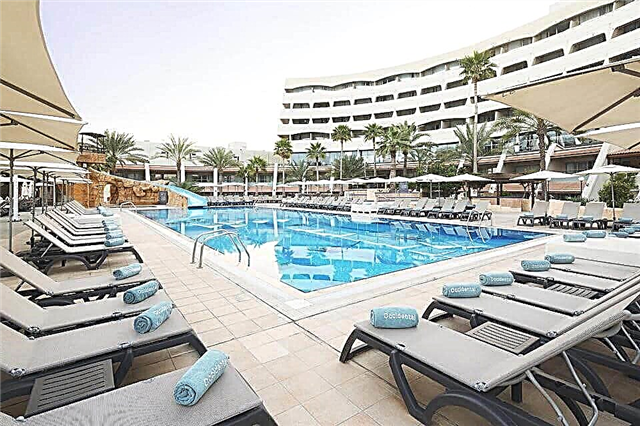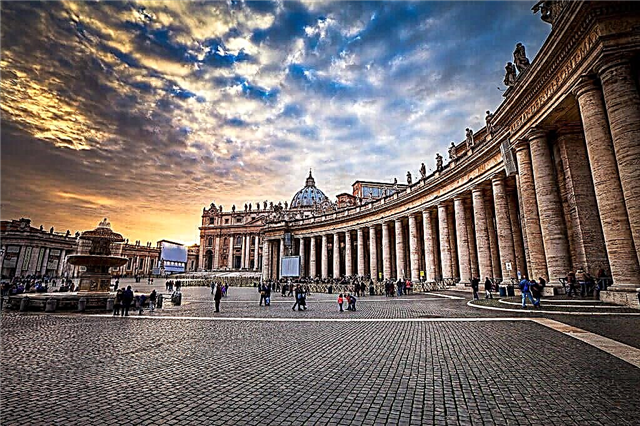Rome, or the "Eternal City", is one of the greatest cultural and historical centers in the world. This is a real treasury for those who want to touch and see with their own eyes ancient structures that have miraculously survived to our time. But besides the stone remains of a bygone era, Rome is full of other memorable places: cathedrals, churches, museums and charming streets. The special attention of tourists is invariably attracted by St. Peter's Square, which is remarkable not only for its original architectural design, but also for the fact that it is located inside the Vatican - the smallest state in the world.
History
At the beginning of our era, St. Peter's Square barely resembled itself a model of modernity. The space between the Janiculum and the Vatican hills was occupied by the circus and gardens of Nero. In the first century, an obelisk, brought back by Caligula, was erected here, the height of which exceeds twenty meters. The Romans consider it a symbol of rebirth.
In the 4th century, after the construction of the first building of St. Peter's Cathedral, the space in front of it was cleared. However, for centuries, on rainy days, it resembled an unsightly swamp. The problem was in elevation differences up to ten meters. Of course, this was no good, given the close proximity of the Vatican. By the decree of Pope Julius II, it was decided to build a new cathedral, and with the coming to power of Pius IV, the area itself was expanded.
The obelisk from the gardens was ordered to be placed in the center - an ambitious undertaking, given the weight of the structure in excess of 300 tons. The transfer became a real performance, where the assembled onlookers were forbidden even to whisper. Fortunately, there were no casualties and destruction. As soon as Pope Alexander VII ascended the throne in April 1655, he commissioned the architect and sculptor Lorenzo Bernini to bring the square in front of the basilica into a divine form. The task before the creator was not an easy one.
He needed not only to take into account the peculiarity of the architectural ensemble, which includes a majestic cathedral, an elaborate fountain and a huge obelisk, but also to fulfill the pope's main wish - from any point of the square, citizens must see the pope when he goes out onto the balcony of the cathedral in order to bless the sinful inhabitants. The construction took eleven long years, and was completely and completely controlled by Alexander.
Architect
Giovanni Lorenzo Bernini is an outstanding Italian architect and sculptor. While still young and inexperienced, he earned the patronage of Cardinal Borghese. Thanks to the support of a noble nobleman, Bernini was able to fully realize his talent. His sculptures were captivated by the thoughtfulness and elaboration of the characters. He created not just faceless sculptures, but emotional and "living" works. When Cardinal Barberini ascended the papal throne, Lorenzo managed to please him too. But now he was instructed not only to sculpt sculptures for mansions, but also to participate in the transformation of the city.
With the coming to power of Alexander VII, it was decided to turn Rome into the world cultural capital. In the Eternal City, a global architectural restructuring began, in which Bernini was directly involved. He carried out both small projects, such as the Church of Sant'Andrea al-Quirnale, and large ones. Of course, the most ambitious is the reconstruction of St. Peter's Square. The two massive semicircular colonnades are often compared to the arms embracing the crowd - the hands of the Pope, whose greatness, like the greatness of the Vatican, is undeniable.
Despite the honor and favor of the secular and religious authorities, this medal also had a downside. At the urgent demand of Pope Alexander VII, the famous architect was forced to go to France in order to take up the order of Louis XIV. In a foreign land, he was greeted cordially, but soon the enthusiasm and praise faded away. Most of Bernini's projects were rejected, and he himself became isolated, not finding friends and associates among the French. Later, the architect returned to his homeland, where he spent his last years. The most significant work of that period is considered to be the tomb of its main patron, Pope Alexander VII.
Sights

St. Peter's Square is surrounded on two sides by semicircular colonnades, which, according to Bernini, personify the outstretched arms of the church, embracing the whole world. They were built in 1660 and consist of four rows of columns. In total, there are 284 Doric pilasters and 88 pilasters in the latter. At the top of the colonnades, there are 140 statues created by Bernini and his students. They depict popes, martyrs, evangelists and other religious leaders.
The geometry of the square is also amazing! There are round marble slabs to the left and right of the central obelisk. If you stand on one of them and look at the nearest colonnade, it will seem that there is only one row of columns instead of four. Of the places that every curious traveler must see on St. Peter's Square, the following are distinguished:
- Obelisk and fountains

In the center of the square is an Egyptian obelisk with a net height of 25.5 meters, and including the pedestal - 41. It was originally erected in the ancient city of Egypt called Heliopolis for the prefect Cornelius Gallus. In the thirty-seventh year of our era, the emperor Caligula transported the obelisk to Rome on a ship specially designed for this transportation. It was installed in the garden of Nero, but then they decided to rearrange it in the center of the square. The difficult task was entrusted to Domenico Fontana, while Michelangelo himself considered it impossible. It took about nine hundred people and a hundred, or even more, horses. The transfer took about five months.
The fountain, designed by Carlo Maderno himself, was installed to the right of the central obelisk in 1613. It is a vast pool with a stone block in the middle. There are two bowls installed on it: a round one with low sides - a lower one and an inverted upper one. Before Maderno, such structures of fountains were not erected in Rome. To make the area symmetrical, Bernini ordered to install an exact copy of the fountain on the left. It was built in 1677 by Carlo Fontana.
- Basilica of Saint Peter

The largest Christian church in the world. The first version of the cathedral was built in the fourth century AD. Many architects have had a hand in the building that has reached our time. For example, D. Bramante, A. di Sangallo, Michelangelo, J. Della Porta, Carla Maderno. The height of the temple is about one hundred and twenty meters, and many Orthodox chapels and churches could easily fit inside. The interior decoration consists of sculptures, mosaics, altars and bas-reliefs. Here is the tomb of St. Peter. Without exaggeration, this cathedral is the main attraction of the Vatican, and one of the five main ones - Rome.
There are always enough tourists on the square, but on special days, like the election of a new pope, there are more than four hundred thousand people here, and the entrance is strictly limited.
Where is it and how to get there

Address: Vatican City State, Piazza San Pietro, 00120
It is best to use public transport to reach your destination. The nearest metro station is called Ottaviano, another one is Cipro. Express bus line 40 also stops here.











